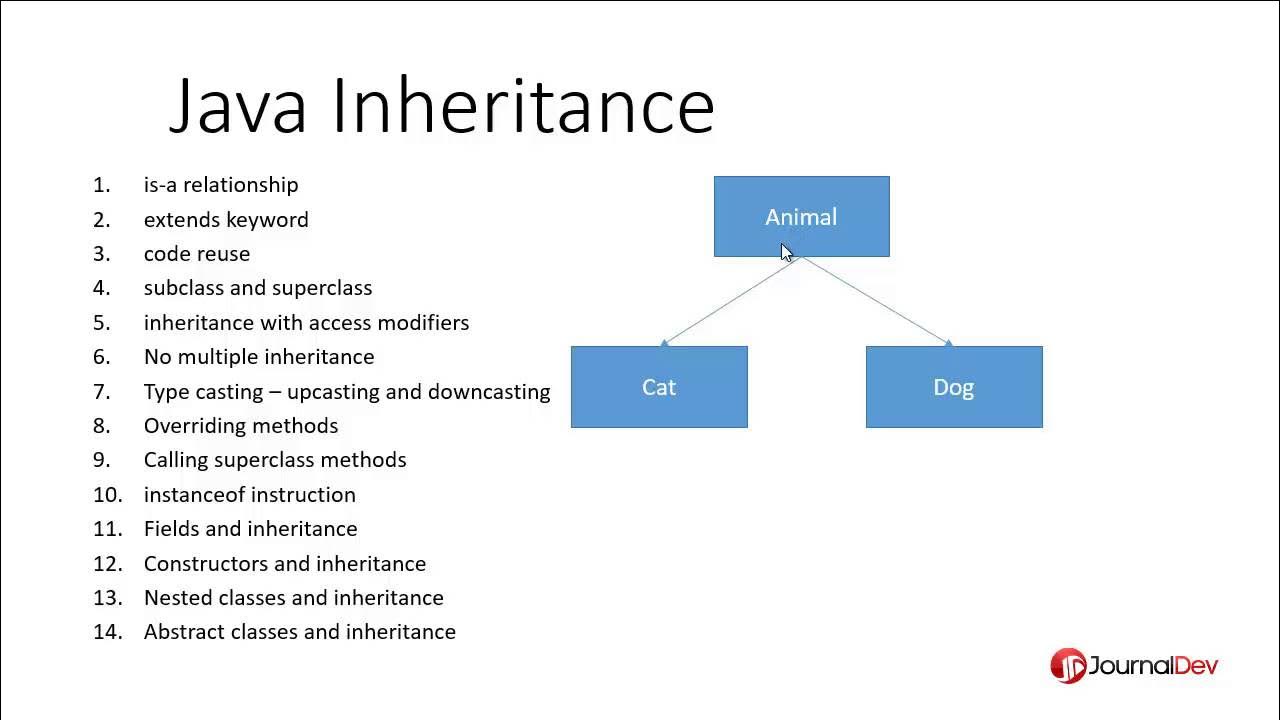Belajar Java [OOP] - 16 - Hierarki Package (default, public, static)
Summary
TLDRThis video script covers the basics of Java package hierarchy and visibility modifiers. The instructor explains the use of 'public' and 'default' access levels in classes and methods, demonstrating how they affect visibility within the same package and across different packages. The tutorial also touches on the concept of static import, allowing direct access to static methods without class qualification. Through coding examples, viewers learn how to create a 'Player' class, utilize visibility modifiers, and call static methods efficiently. The script is an informative guide for beginners looking to understand Java's access control and import mechanisms.
Takeaways
- 😀 The video is a Java tutorial focusing on the concept of package hierarchy and visibility modifiers.
- 📁 It explains the structure of a Java project, starting with the 'src' folder and moving into package directories like 'com.titik.tutorial'.
- 🔡 The importance of using lowercase for package and class names is emphasized, and a common mistake of using uppercase is pointed out.
- 🔑 The tutorial covers the use of visibility keywords such as 'default', 'public', and 'private', explaining their accessibilities within the package and outside.
- 🚫 The 'private' keyword is used to restrict access to class members, making them inaccessible outside the class they are declared in.
- 🌐 The 'public' keyword allows classes and methods to be accessible from any other class, with the requirement of using 'import' statements when outside the package.
- 🔄 The concept of 'import static' is introduced, which allows for the use of static methods without needing to create an instance of the class.
- 🛠️ The video provides a practical example of creating a 'Player' class with a 'public' modifier and a 'private' string field, demonstrating encapsulation.
- 📝 It also shows how to create a 'main' method and instantiate the 'Player' class, illustrating the use of visibility modifiers in practice.
- 🔍 The tutorial touches on the topic of method overloading and hints at future lessons on inheritance, suggesting a structured learning path for Java programming.
- 👋 The presenter ends the video with a friendly sign-off, encouraging viewers to continue coding and stay safe.
Q & A
What is the main topic of the tutorial in the transcript?
-The main topic of the tutorial is about understanding and implementing Java class visibility and package hierarchy.
What does 'src' stand for in the context of the script?
-In the script, 'src' refers to the source folder where the Java source code files are stored.
What are the two types of class visibility mentioned in the tutorial?
-The two types of class visibility mentioned are 'default' (package-private) and 'public'.
What is the significance of using lowercase letters in package names according to the script?
-Using lowercase letters in package names is a convention that helps to avoid issues with case sensitivity in different operating systems.
What is the purpose of the 'main' method in Java as discussed in the script?
-The 'main' method serves as the entry point of a Java application, where the program execution begins.
What is the role of the 'player' class in the example given in the script?
-The 'player' class in the example is used to demonstrate how class members can be accessed and manipulated, as well as how visibility modifiers work.
Why is the 'import' statement necessary when using classes from different packages?
-The 'import' statement is necessary to allow the Java compiler to locate and include classes from different packages, making their members accessible in the current file.
What is the difference between 'default' and 'public' visibility for a class member?
-A 'default' visibility member is only accessible within the same package, while a 'public' member can be accessed from any other class, regardless of the package.
What does the term 'overloading' refer to in the context of methods?
-Method overloading refers to the ability to have multiple methods with the same name but different parameters within the same class.
Why is the 'static' keyword used in the context of the 'console' class in the script?
-The 'static' keyword is used to define class methods or variables that belong to the class itself rather than instances of the class, allowing them to be accessed without creating an object of the class.
What is the purpose of the 'System.out.println()' method in Java?
-The 'System.out.println()' method is used for outputting information to the console or standard output stream, which is useful for debugging and displaying results.
Outlines

Dieser Bereich ist nur für Premium-Benutzer verfügbar. Bitte führen Sie ein Upgrade durch, um auf diesen Abschnitt zuzugreifen.
Upgrade durchführenMindmap

Dieser Bereich ist nur für Premium-Benutzer verfügbar. Bitte führen Sie ein Upgrade durch, um auf diesen Abschnitt zuzugreifen.
Upgrade durchführenKeywords

Dieser Bereich ist nur für Premium-Benutzer verfügbar. Bitte führen Sie ein Upgrade durch, um auf diesen Abschnitt zuzugreifen.
Upgrade durchführenHighlights

Dieser Bereich ist nur für Premium-Benutzer verfügbar. Bitte führen Sie ein Upgrade durch, um auf diesen Abschnitt zuzugreifen.
Upgrade durchführenTranscripts

Dieser Bereich ist nur für Premium-Benutzer verfügbar. Bitte führen Sie ein Upgrade durch, um auf diesen Abschnitt zuzugreifen.
Upgrade durchführenWeitere ähnliche Videos ansehen

Access protection in java

10-Minute Tutorial: Patient-Level Prediction or "PLP" (Jenna Reps)

Inheritance in Java - Java Inheritance Tutorial - Part 1

Inheritance in Java - Java Inheritance Tutorial - Part 2

Introduction to Java (Hindi) | What is Java? Explain with Syntax and Example

Android application that uses GUI components, font and colors - 01
5.0 / 5 (0 votes)
